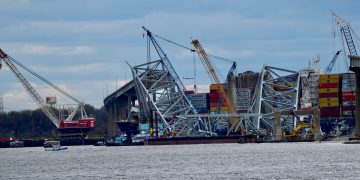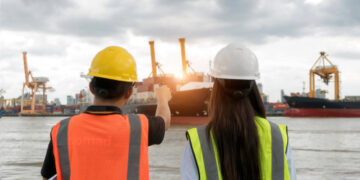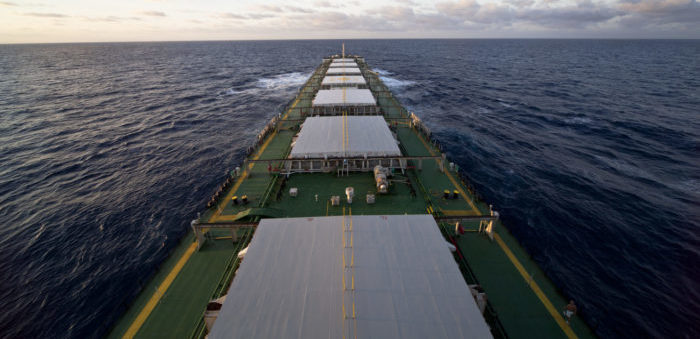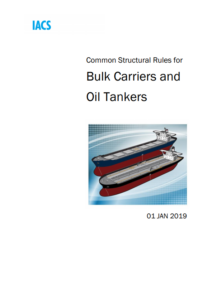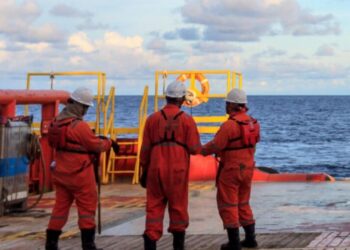IACS published the new ‘Common Structural Rules for Bulk Carriers and Oil Tankers (CSR BC & OT)’. The latest rules will replace the current Common Structural Rules for Double Hull Oil Tankers (CSR-OT) and Common Structural Rules for Bulk Carriers (CSR-BC). These Rules will enter into force on 1st July 2019.
CSR BC & OT is a comprehensive rule set that aims to establish the standard for oil tankers and bulk carriers and includes two main parts:
- The first part covers general hull requirements that apply to both ship types, such as wave loads, hull girder strength, buckling and fatigue requirements;
- The second one regards ship-type specific requirements that only apply to bulk carriers or oil tankers.
[smlsubform prepend=”GET THE SAFETY4SEA IN YOUR INBOX!” showname=false emailtxt=”” emailholder=”Enter your email address” showsubmit=true submittxt=”Submit” jsthanks=false thankyou=”Thank you for subscribing to our mailing list”]
The rule application is not different from CSR-OT and CSR-BC, while they also comply with SOLAS II-1 Regulation 3-10 ‘Goal-based ship construction standards for bulk carriers and oil tankers’ (GBS).
They specifically apply to yankers for oil and oil product, with length 150m or above, and bulk carriers with length of 90m or above. However, ore carriers, open hatch bulk carriers without hopper and top side tanks, OBOs, self-unloaders and some other specialized bulk carriers, are excluded by the CSR.
The main objectives of the Rules are to set out the classification minimum requirements to address the risks of major hull structural failure in order to help improve the safety of life, environment and property and to contribute to the durability of the hull structure for the ship’s design life.
Moreover, these Rules address the hull structural aspects of classification and do not include requirements regarding the verification of compliance with the Rules during construction and operation. In order to achieve the safety level targeted by the Rules, various aspects related to design, construction and operation of the ship are assumed to be met by the parties involved in the application and implementation of the Rules. A summary of these assumptions are given in the following:
- Relevant information and documentation involved in the design, construction and operation is communicated between the builder, the designer, the Society and the owner as agreed between builder and owner. Design documentation according to Rule requirements is provided;
- Quality systems are applied to the design, construction, operation and maintenance activities by owners and other relevant parties to ensure the compliance with the requirements of the Rules;
- The owner specifies the intended use of the ship, and the ship is designed according to operational requirements as well as the structural requirements given in the Rules;
- The builder identifies and documents the operational limits for the ship so that the ship can be safely and efficiently operated within these limits;
- Verification of the design is performed by the builder to check compliance with provisions contained in the Rules in addition to national and international regulations;
- The design is performed by appropriately qualified, competent and experienced personnel;
- The builder provides adequate supervision and quality control during the construction;
- Construction is carried out by qualified and experienced personnel.
As for the ships’ design, the Rules say that they have to be designed to withstand, in the intact condition, the environmental conditions anticipated during the design life, for the appropriate loading conditions. Structural strength is to be determined against buckling and yielding. Ultimate strength calculations have to include ultimate hull girder capacity and ultimate strength of plates and stiffeners.
In addition, vessels with a length of 150 m or over have to be designed to have adequate reserve strength to withstand the loads in damaged conditions, such as collision, grounding or flooded scenarios. Residual strength calculations also have to consider the ultimate reserve capacity of the hull girder, considering permanent deformation and post-buckling behaviour.
You may see more information in the PDF herebelow







